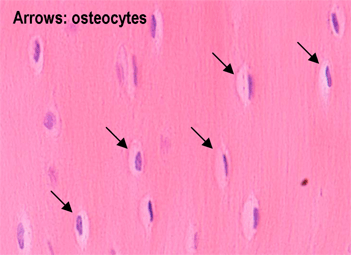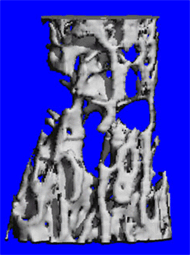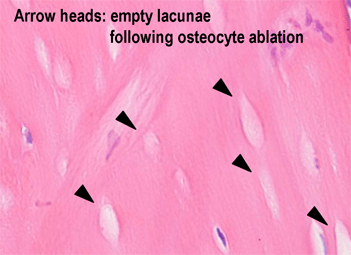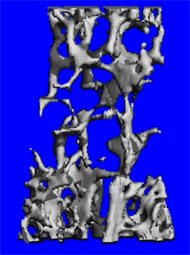 |
October 2007 Mouse of the Month |
Dmp1-HBEGF Transgenic Mouse
|
| A. Cortical Bone of Tibia | B. Lumbar Vertebra | |
 |
 |
Wild-type
|
 |
 |
Hemizygote
|
| A. Osteocyte ablation following DT injection (8 days) H&E staining of cortical bone of tibia B. Development of osteoporosis following osteocyte ablation 3D images of lumbar vertebrae obtained by micro CT (Ito M, Nagasaki Univ.) |
||
Bone remodeling consists of two distinct stages, resorption and formation, which are performed by osteoclasts and osteoblasts, respectively. Dmp1-HBEGF transgenic mice express human HB-EGF as the receptor for diphtheria toxin (DT) on the cell surface of osteocytes under the control of Dmp1 promoter. Most of the osteocytes (70 to 80%) can be ablated in these transgenic mice by injection of DT. The osteocytes-ablated mice develop osteoporosis, even in young age, showing fragile bone with intracortical porosity and microfractures, osteoblastic dysfunction, and loss of trabecular bone with microstructural deterioration and adipose tissue proliferation in the marrow space. Interestingly, the mice do not respond to mechanical unloading with bone loss. This strain is a useful model for the study of osteoprosis and mechanotransduction in bone.
| Depositor | : | Dr. Kyoji Ikeda (National Center for Geriatrics & Gerontology) |
| Reference | : | Cell Metab. (2007) 5(6):464-75. |




